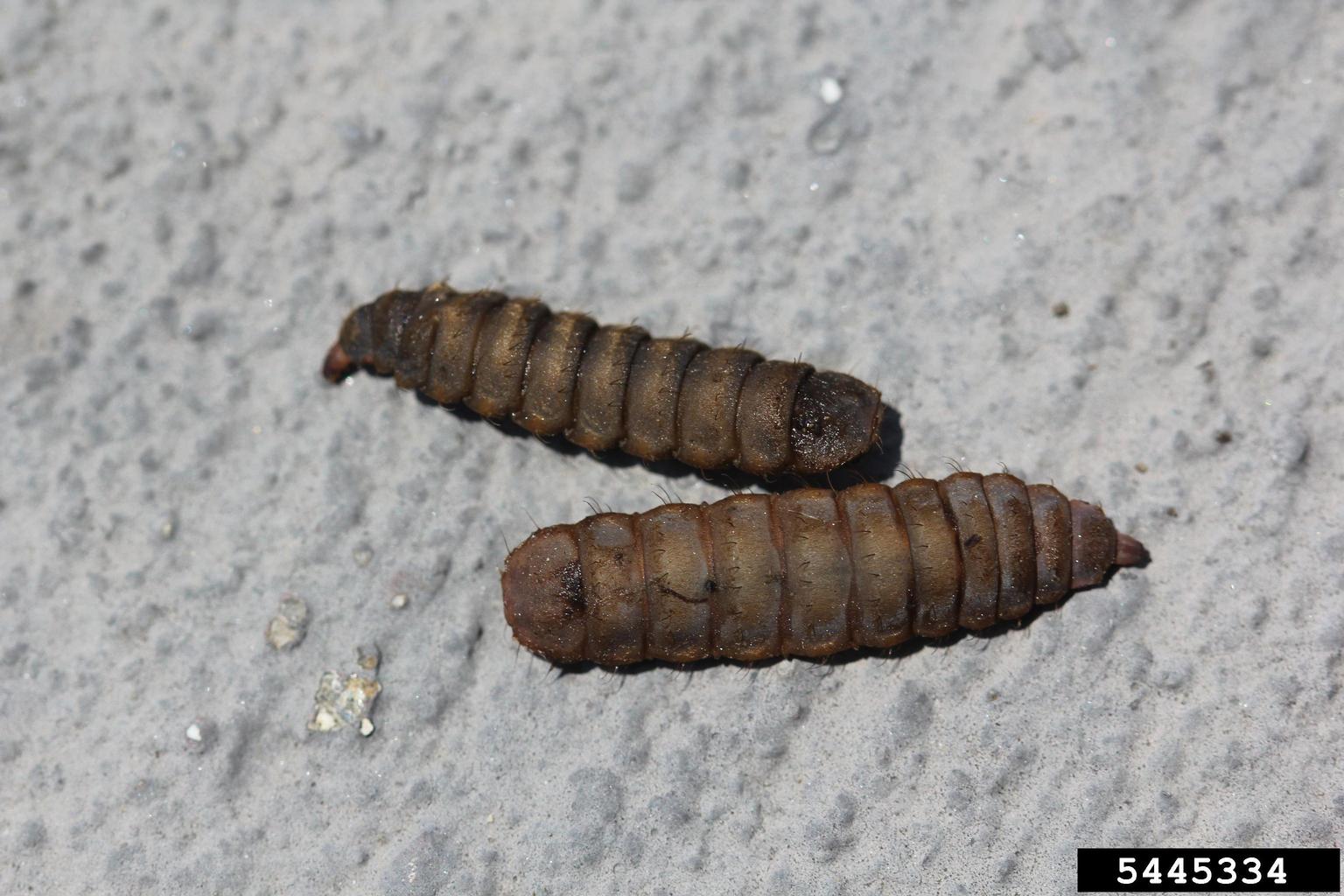What Are Soldier Flies: Help For Larva Found In Compost Piles

If you've been disturbed by grayish brown larva found in compost piles, you've probably come across the relatively harmless soldier fly larva. These grubs thrive in compost piles with an abundance of green materials and lots of extra moisture. While they may be ugly to the average gardener, soldier flies in compost actually benefit the area. Rather than trying to get rid of them as with other compost pests, you might be better off learning about soldier flies and all the good they can do.
What are Soldier Flies?
What are soldier flies? These relatively large insects resemble black wasps, and yet they're perfectly harmless to human beings and other mammals. They don't have mouths or stingers, so they can't bite or otherwise hurt you. The fly portion of this insect's life is spent flying around and mating, then laying eggs and dying within two days. They don't like to go in houses, they help to keep away the common housefly, and they prefer spots that humans shun such as manure piles and outhouses.
Soldier Fly Larva Found in Compost Piles
Once the soldier fly larva hatch from the eggs, they begin to really show their usefulness. They're champions at breaking down green materials and household garbage, turning it into a form that's easier for common worms to digest. They can break down manure in a matter of days, reducing the smell and chance of carried disease in areas where animal waste is stored. Once they have reduced manure piles to component parts, the worms drop away, making them easy to gather to use for chicken feed. Birds love this larva, and they are a good source of protein. What to do for soldier fly larva? Once you recognize the usefulness of these little wigglers, you'll want to encourage them in your compost pile. Keep the amount of green material, such as kitchen waste, near the top of the heap instead of burying it underneath dry leaves. Water the pile a little more than usual to help keep the moisture levels up. If soldier fly larva seem to be taking over and crowding out the regular earthworms in compost, however, begin burying kitchen waste underneath at least 4 inches (10 cm.) of leaves, paper, and other brown materials and cut back on the moisture available to the pile.
Gardening tips, videos, info and more delivered right to your inbox!
Sign up for the Gardening Know How newsletter today and receive a free copy of our e-book "How to Grow Delicious Tomatoes".
-
 Try The Trend – Turn Any Bed Into A Keyhole Garden With This Clever In-Ground Composter
Try The Trend – Turn Any Bed Into A Keyhole Garden With This Clever In-Ground ComposterKeyhole gardening is an efficient and sustainable practice that saves space. Get started on this DIY project quickly and easily with an in-ground composter.
By Bonnie L. Grant
-
 4 Superfast Composting Methods: Turn Waste Into Garden Gold In 30 Days Or Less
4 Superfast Composting Methods: Turn Waste Into Garden Gold In 30 Days Or LessTry the fastest composting methods to turbocharge your pile and transform kitchen scraps and garden waste into finished compost in just a few weeks.
By Mary Ellen Ellis